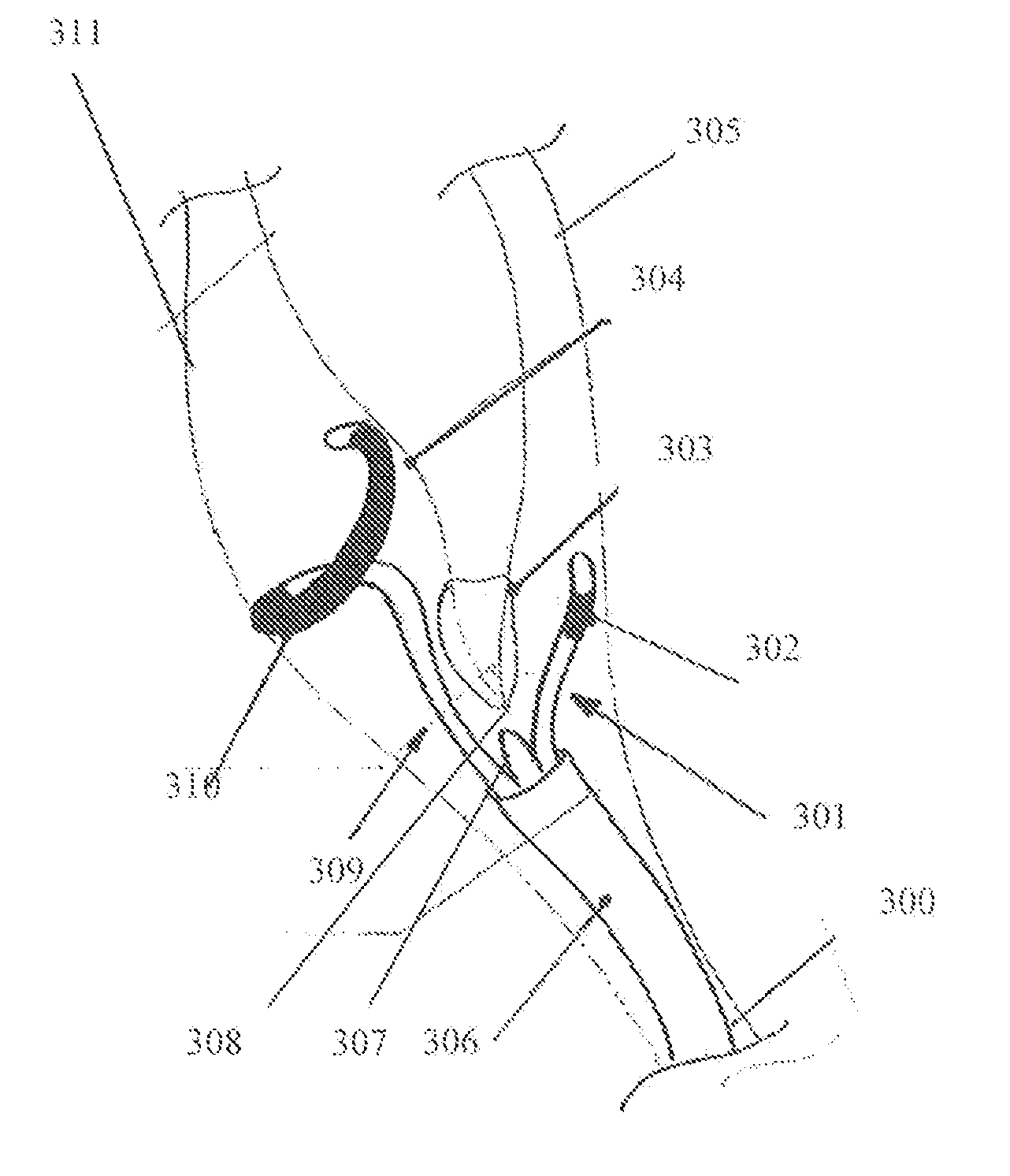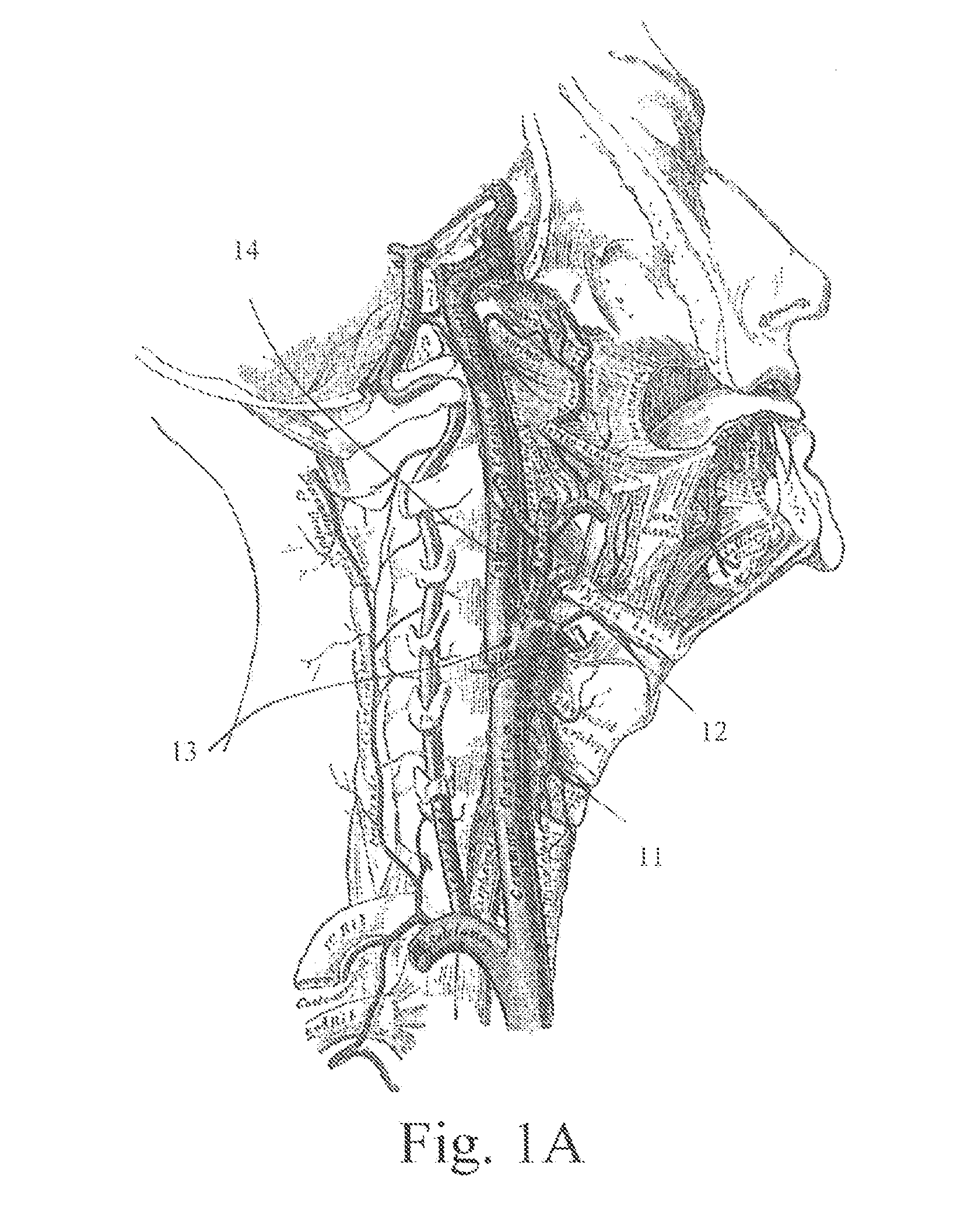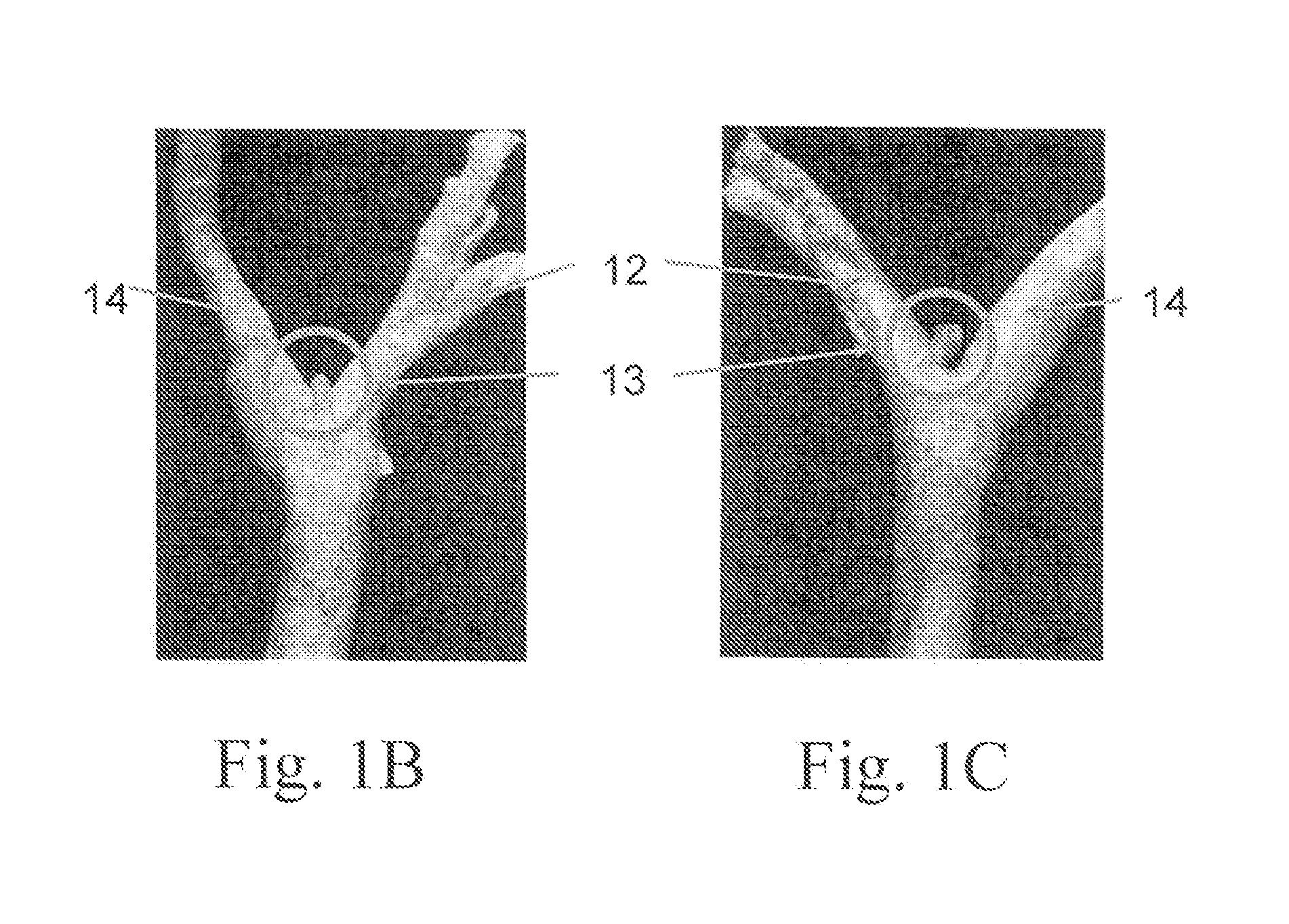Electrostimulation in treating cerebrovascular conditions
a cerebrovascular condition and electrocardiogram technology, applied in the field of electrocardiogram in treating cerebrovascular conditions, can solve the problems of increasing blood pressure, reducing cardiac output, reducing systemic vascular resistance, etc., and achieving the effect of reducing physiological toleran
- Summary
- Abstract
- Description
- Claims
- Application Information
AI Technical Summary
Benefits of technology
Problems solved by technology
Method used
Image
Examples
example 1
Vasodilatory Effect Following Electrostimulation
[0244]Reference is now made to FIG. 20, which schematically illustrates the vasodilatory effect in the major cerebral arteries of electrical stimulation of the carotid body in swine. Vessel diameter increases significantly in the anterior communicating artery, and the anterior cerebral left and right arteries. In this example the anterior cerebral right artery diameter increases only by more than 5% during the period for 5 to 16 minutes after the start of treatment and rises to more than 20% during the subsequent 50 minutes of treatment. The anterior communicating artery has a similar response to this stimulation, with vessel diameter increasing by more than 10% during the period for 5 to 16 minutes after the start of treatment and by more than 20% during the subsequent 50 minutes of treatment. The anterior cerebral left artery shows significantly better response, with vessel diameter increasing by nearly 30% during the period for 5 to...
example 2
Electro-Stimulation of the Chemoreceptors
[0245]The following example illustrates the in-vivo implantation of lead electrodes in the internal carotid arteries (left and right), in swine and the effect of the stimulation on arterial blood pressure (BP) and cerebral perfusion (CP), measured using Laser Doppler).
[0246]A delivery with a multiple electrode catheter was emplaced in the internal carotid arteries, near the carotid bifurcation, the electrical stimulation signal was delivered and the physiological effect was measured.
[0247]Reference is now made to FIG. 21 illustrating the positioning of the electrodes 2130 in the internal carotid arteries in swine.
[0248]Reference is now made to FIGS. 22a-22c illustrating the test results.
[0249]Reference is now made to FIG. 22a which illustrates the electrical signal being applied vs. time.
[0250]The influence of the applied signal is seen in FIG. 22b and FIG. 22c.
[0251]It should be pointed out that FIG. 22a-22c are all provided on a unified ti...
example 3
Cerebral Perfusion Enhancement Following Electrostimulation
[0253]Reference is now made to FIG. 23, which shows the enhancement of cerebral perfusion in swine during electrical stimulation. Enhancement of cerebral perfusion will be different from vasodilation, because perfusion enhancement depends on factors other than vasodilation, such as blood pressure. During stimulation, cerebral perfusion increases by more than 20% over the baseline value, returning to the baseline value after the end of the stimulation.
[0254]In summary, the present invention provides an electrostimulation system that enables dilatation of cerebral blood vessels and enhancement of cerebral perfusion when the carotid bodies in the area of the carotid artery bifurcation are stimulated.
PUM
 Login to View More
Login to View More Abstract
Description
Claims
Application Information
 Login to View More
Login to View More - R&D
- Intellectual Property
- Life Sciences
- Materials
- Tech Scout
- Unparalleled Data Quality
- Higher Quality Content
- 60% Fewer Hallucinations
Browse by: Latest US Patents, China's latest patents, Technical Efficacy Thesaurus, Application Domain, Technology Topic, Popular Technical Reports.
© 2025 PatSnap. All rights reserved.Legal|Privacy policy|Modern Slavery Act Transparency Statement|Sitemap|About US| Contact US: help@patsnap.com



